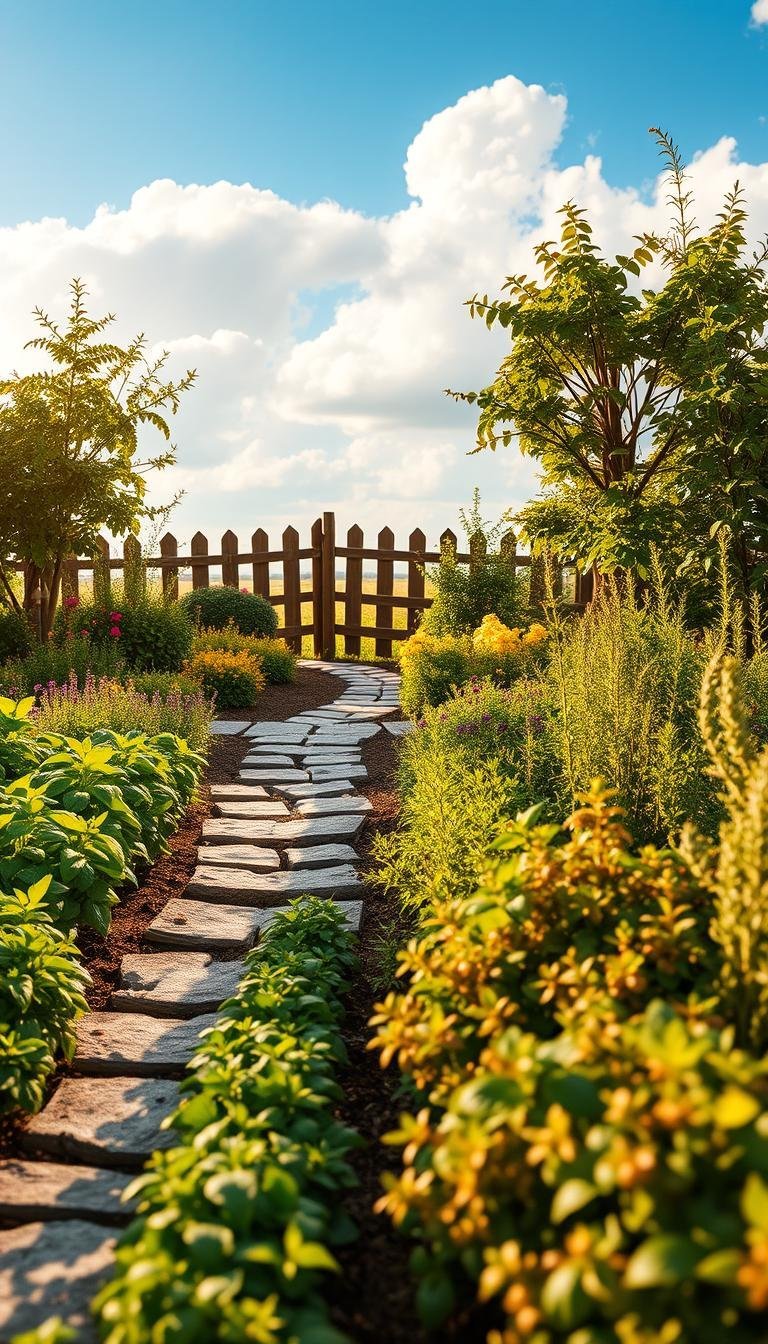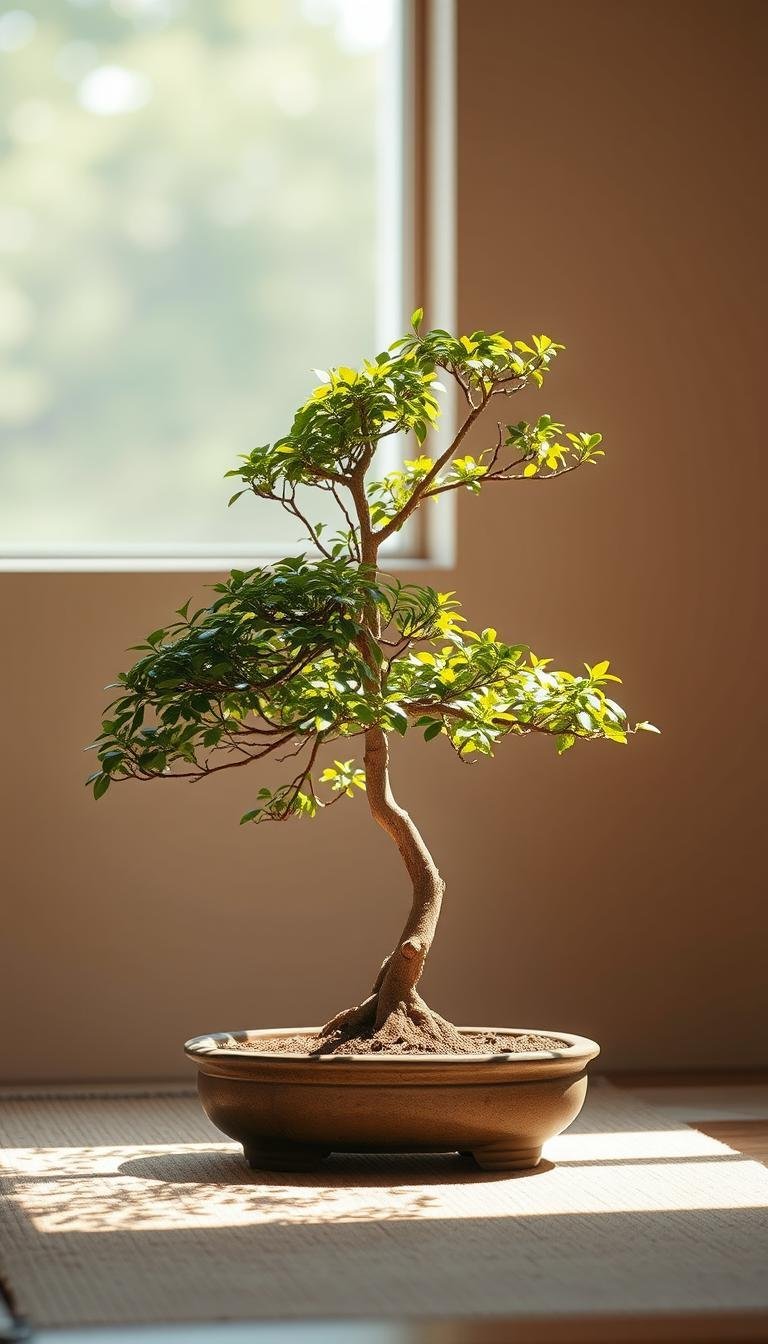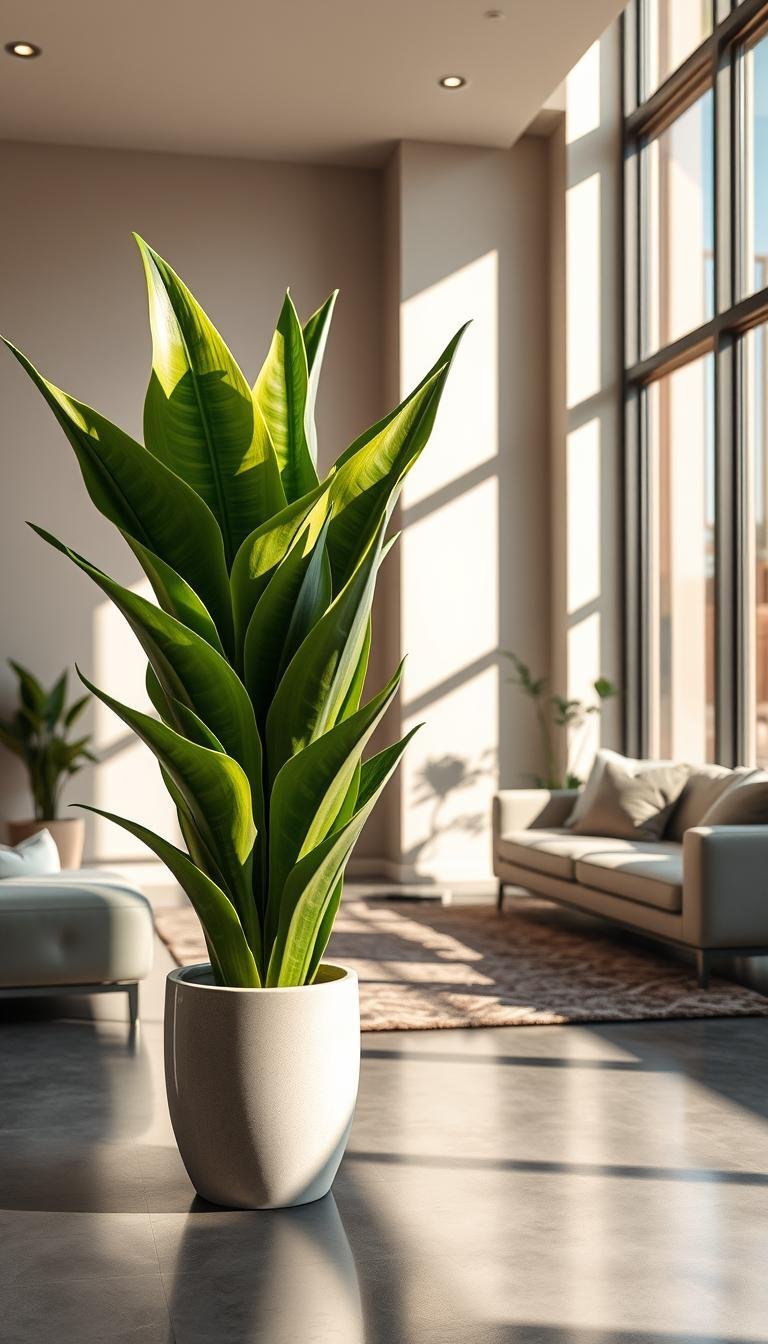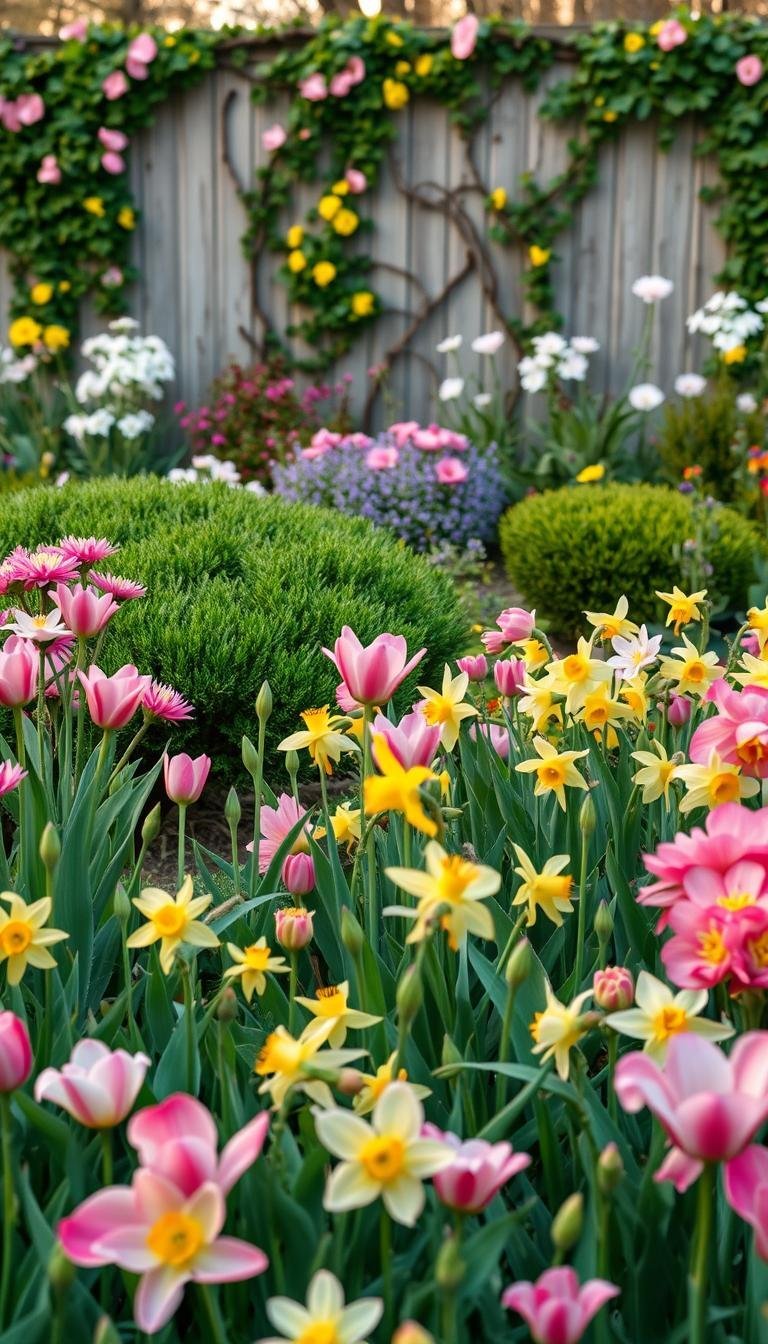This post may contain affiliate links. If you click and buy, we may earn a small commission at no extra cost to you. Learn more.
Turn your outdoor or indoor space into a vibrant herb garden with helpful herb garden layout tips. This guide makes designing a thriving garden easy. It gives you fresh herbs for cooking, reduces stress, and supports eco-friendly practices. Let’s get started!
Find herb garden plans for any space, from sunny kitchen windowsills to backyard plots. Learn how a kitchen herb garden layout can fit even small areas like balconies or patios. It ensures plant health and easy access. No experience needed!
This guide breaks down steps for choosing plants, arranging layouts, and keeping them growing. By the end, you’ll have a plan to create a productive, beautiful garden that fits your lifestyle. Ready to grow?
Contents
- 1 Understanding the Benefits of an Herb Garden
- 2 Choosing the Right Location for Your Herb Garden
- 3 Planning Your Herb Garden Layout
- 4 Selecting Herbs for Your Garden
- 5 Companion Planting for Herbs
- 6 Optimal Herb Garden Design Ideas
- 7 Soil Preparation for Your Herb Garden
- 8 Watering Techniques for Herb Gardens
- 8.1 Automate watering with drip systems that target roots, saving water and preventing leaf rot. DIY kits are great for small container herb gardening spaces. Larger gardens do well with commercial systems. These are perfect for indoor herb garden ideas, providing steady moisture without needing daily checks.
- 8.2 Collect rainwater in barrels or containers to nourish herbs naturally. This nutrient-rich water is ideal for container herb gardening and cuts down on tap water use. Use it for indoor plants too, making sure screens block debris.
- 9 Pest Control Strategies for Herbs
- 10 Maintaining Your Herb Garden
- 11 Harvesting Your Herbs
- 12 Enjoying the Fruits of Your Labor
Understanding the Benefits of an Herb Garden
Gardening with herbs is more than just adding flavor to your meals. A well-thought-out kitchen herb garden layout can change how you cook and relax. It also helps you live more sustainably. Whether you’re new to gardening or have experience, the benefits are worth starting small.
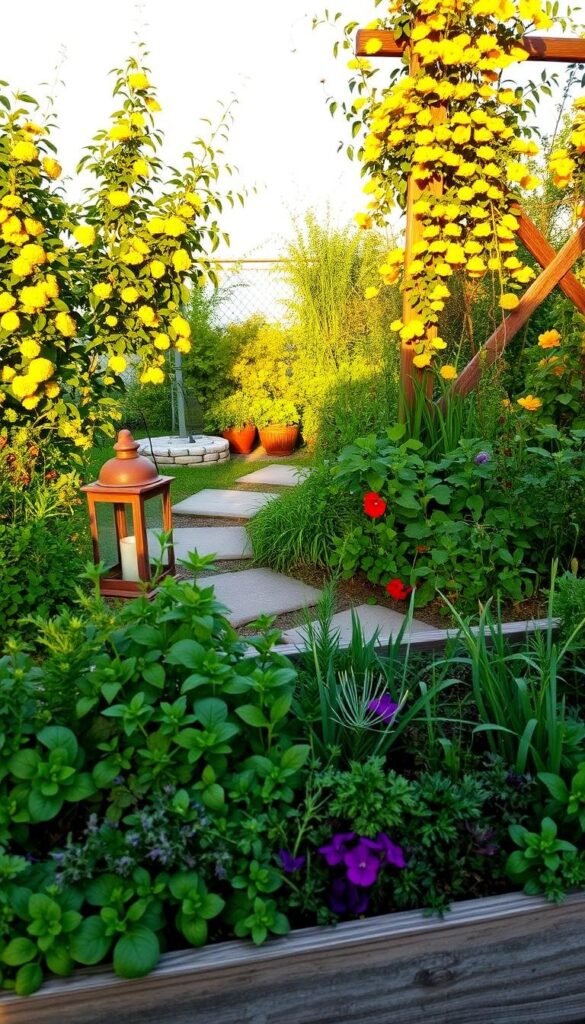
Enhance Your Culinary Creations
Imagine using best herbs to grow like basil, rosemary, or cilantro right from your garden. Fresh herbs give dishes a brighter, more complex taste than dried ones. Grow your favorite herbs, like thyme for soups or mint for teas, to make cooking easier and cut down on grocery trips.
Improve Your Mental Well-Being
Gardening can help reduce stress. Even small gardens offer a calming routine. Planting and harvesting give a sense of achievement. Studies show spending time outdoors with plants can lower anxiety and improve focus, turning your garden into a personal wellness space.
Contribute to Sustainability
Homegrown herbs mean less reliance on store-bought options, reducing plastic waste. By growing your own, you avoid produce shipped far away, lowering carbon emissions. Even a balcony garden supports eco-friendly living, showing sustainability can start small.
Choosing the Right Location for Your Herb Garden
When planning a small herb garden design or indoor herb garden ideas, picking the right spot is key. Look for a spot with good light, the right soil, and easy access. This will help your herbs grow well.
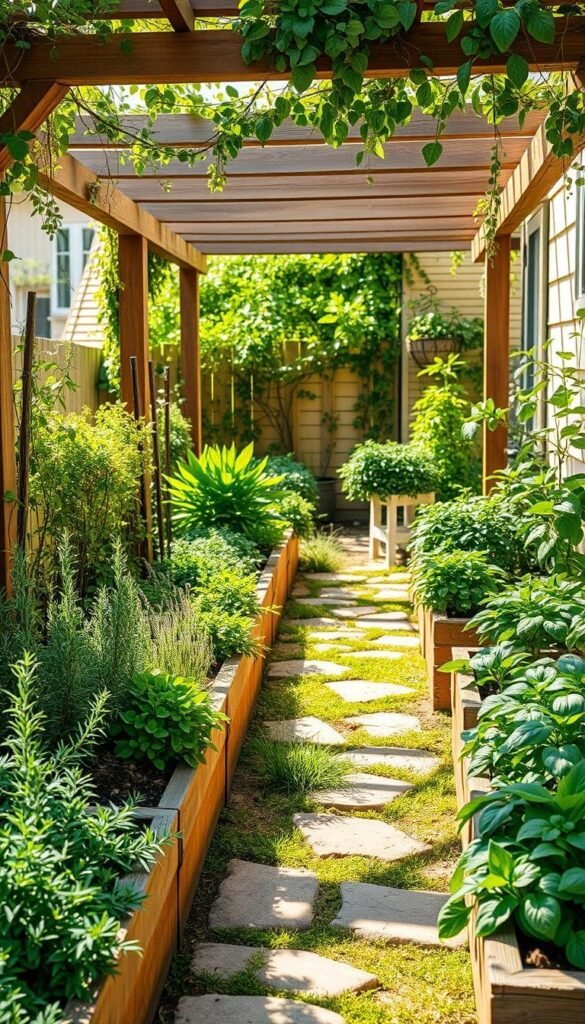
Sunlight Requirements
Most herbs need 6–8 hours of sunlight each day. Some, like basil and rosemary, love full sun. Others, like mint or parsley, can handle partial shade.
If space is tight, move pots to catch more sunlight. For indoor herb garden ideas, place them near south-facing windows. Or use grow lights for darker spots.
Soil Quality
Good soil is essential for healthy herbs. Check if the soil drains well by soaking it and seeing if water flows. If it’s too wet or dry, add compost or sand.
For tricky herbs like thyme or chives, use raised beds or containers. This way, you can tailor the soil mix to their needs.
Accessibility
Make sure your garden is easy to reach. Small herb garden design near kitchens or walkways saves time. Indoors, put them on countertops or shelves near sinks.
For big outdoor gardens, leave enough space between plants. This prevents overcrowding and helps plants breathe.
Planning Your Herb Garden Layout
Turn your space into a lush herb garden with these tips. Every herb garden layout fits your style, from neat rows to creative vertical designs. Let’s look at ways to make any area green and productive.
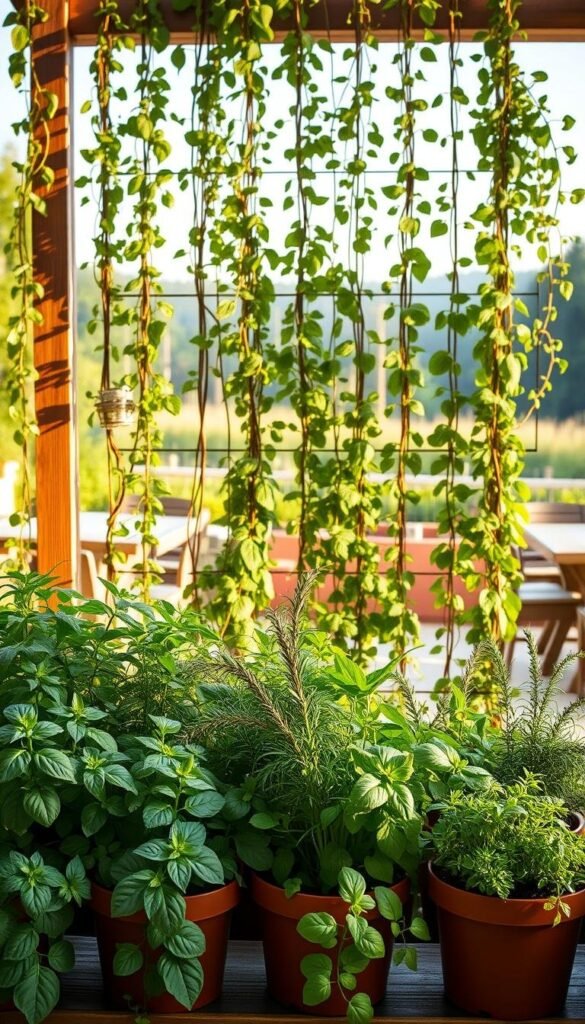
Traditional Row Layout
Classic rows are perfect for open spaces. Plant herbs like rosemary or oregano in straight lines. Leave 1–2 feet between rows for easy access.
This herb garden layout makes weeding and harvesting simple. It prevents overcrowding too.
Square Foot Gardening
Split your garden bed into 1’x1’ squares for herb garden plans that boost yield. Quick-growing herbs like cilantro do well in one square. Hardier thyme can fill another.
This grid system is great for small yards or raised beds.
Vertical Herb Garden Design
Use wall-mounted planters, stack containers, or repurpose pallets to save space. A vertical setup is ideal for apartments or patios. Think basil in hanging baskets or mint in tiered shelves.
These designs turn even small spaces into lush, functional areas.
Selecting Herbs for Your Garden
Choosing herbs that fit your kitchen and climate is key. Pick varieties that match your cooking style and growing conditions. This will help create a lively kitchen herb garden layout.

Popular Culinary Herbs
These herbs bring bold flavors and grow well in most climates:
- Basil: A summer favorite for pesto and salads. It loves full sun, making it perfect for warm months.
- Thyme: It’s great for seasoning roasted veggies or meats and is drought-tolerant.
- Rosemary: A hardy perennial that’s perfect for Mediterranean dishes.
Medicinal Herbs to Consider
“Herbs like chamomile and lavender thrive in sunny spots and offer natural remedies,” notes the National Herb Association. Plant these in well-drained soil for easy harvests.
Try echinacea for immune support or lemon balm to deter pests and promote calmness.
Seasonal Herbs and Their Benefits
Blend annuals and perennials for growth all year:
- Annuals like dill and cilantro do well in spring/summer.
- Perennials such as sage come back every year, saving space in your kitchen herb garden layout.
- Winter herbs like chives survive light frosts, extending harvests into colder months.
Start with easy herbs like basil and thyme. Then, try less common herbs like lovage or orris root as you get more confident.
Companion Planting for Herbs
Companion planting makes your herb garden healthier and more productive. It’s a way to pair plants that help each other, perfect for herb garden plans in tight spots. By choosing the right plants, you can keep pests away, attract helpful insects, and improve soil quality. These are all important for a successful small herb garden design.
What is Companion Planting?
This method matches plants that help each other. For instance, marigolds keep nematodes away, protecting herbs. Borage draws bees, helping with pollination, and dill attracts ladybugs to eat aphids. These relationships create a balanced garden ecosystem.
Best Companions for Common Herbs
- Basil grows well near tomatoes, making them taste better and keeping flies away.
- Rosemary helps carrots by keeping carrot flies off.
- Sage supports brassicas by keeping cabbage moths away.
Avoiding Harmful Pairings
Some plants don’t get along. Never plant fennel near most herbs—it harms their growth. Mint can take over, so keep it in pots. Always check which plants go well together to keep your garden in balance.
“Good neighbors make great gardens.” – Organic Gardening Association
Use these tips in your herb garden plans to make the most of your space. With the right choices, companion planting turns your garden into a self-sustaining paradise.
Optimal Herb Garden Design Ideas
Designing your herb garden begins with picking a structure that fits your space and taste. Whether you have a small area or a big yard, these ideas can make any spot a lush haven.
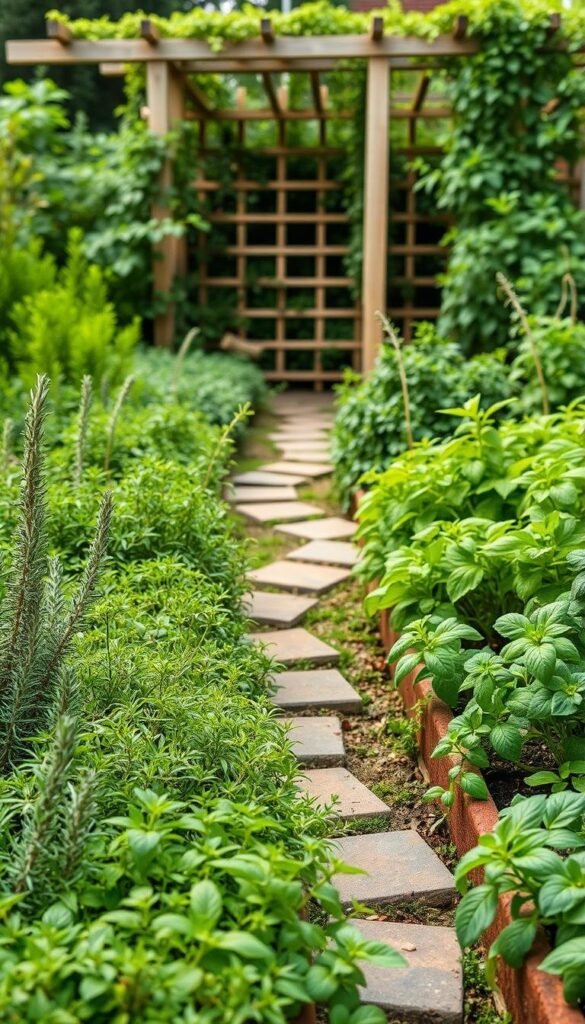
Raised Beds
Choose a raised bed herb garden for better soil and water control. These beds, made from untreated wood or stone, are easy to get to and good for roots. They should be 8–12 inches deep and under 4 feet wide for easy access. Container herb gardening pros suggest using cedar or composite to avoid rot.
Container Gardens
- Use pots, buckets, or even old wheelbarrows for container herb gardening.
- Make sure there are drainage holes and group plants by water needs.
- Mint and basil do well in portable setups, great for small spaces or renters.
“A well-planned container garden can be as impactful as any in-ground design.” – The Herb Society of America
In-Ground Garden Design
For bigger areas, an in-ground herb garden layout works well. Use stones or bricks to mark the garden’s edges. Place rosemary and lavender in sunny spots, and chives in partial shade. Mixing herbs with flowers creates a beautiful landscape.
Urban gardeners can blend herbs in patio containers. Rural areas allow for wider rows. Focus on soil quality and spacing for each design to enhance growth and beauty.
Soil Preparation for Your Herb Garden
Starting with healthy soil is essential for thriving herbs. Whether you’re building a raised bed herb garden or trying container herb gardening, soil prep is key. Let’s break down steps to get your soil ready.
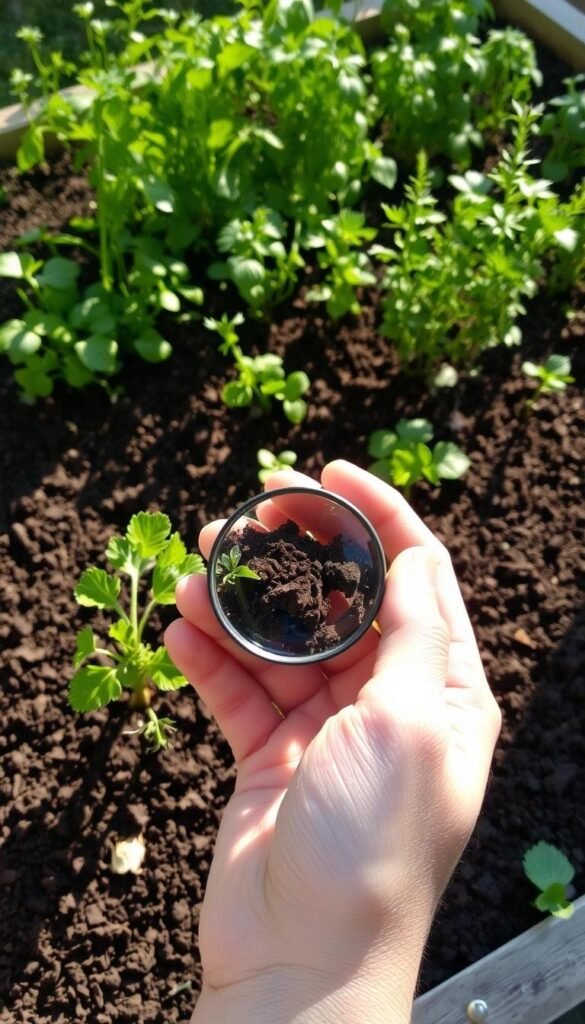
Testing Soil pH
Most herbs grow best in soil with a pH between 6.0 and 7.0. Use a home test kit or soil strips to check levels. Local agricultural extensions often offer free testing. Adjust acidic soil by adding lime; lower pH with sulfur.
Amending Soil for Nutrients
Boost soil health with organic matter like compost or well-rotted manure. Mix in 2-3 inches of compost to improve structure and nutrients. Avoid over-fertilizing—too much nitrogen can weaken herb flavors. Popular herbs like basil or thyme thrive in balanced, loamy soil.
Ensuring Proper Drainage
Good drainage prevents root rot. For raised bed herb garden setups, mix in perlite or coarse sand. In container herb gardening, add drainage holes and a layer of gravel at the bottom. Herbs like rosemary dislike soggy soil—always prioritize airflow and moisture control.
Watering Techniques for Herb Gardens
After getting your soil ready, watering is key for herbs to grow well. Choose methods based on your garden’s location, indoors or outdoors. We’ll look at simple ways to keep your plants healthy without making care too hard.
Automate watering with drip systems that target roots, saving water and preventing leaf rot. DIY kits are great for small container herb gardening spaces. Larger gardens do well with commercial systems. These are perfect for indoor herb garden ideas, providing steady moisture without needing daily checks.
Water early morning to reduce evaporation and disease risks.
Direct water to soil, avoiding wet leaves to prevent mildew.
Let soil dry slightly between sessions—most herbs dislike soggy roots.
For container herb gardening, check soil moisture daily, even more so in sunny windowsills for indoor herb garden ideas.
Collect rainwater in barrels or containers to nourish herbs naturally. This nutrient-rich water is ideal for container herb gardening and cuts down on tap water use. Use it for indoor plants too, making sure screens block debris.
“Rainwater’s softness suits herbs better than chlorinated tap water.”
Pest Control Strategies for Herbs
Keeping your herbs safe from pests begins with prevention. Whether you have an indoor herb garden ideas or a small herb garden design, these tips help keep your plants healthy. They avoid harsh chemicals. Here’s how to fight off common pests:
Natural Pest Deterrents
- Plant marigolds or basil alongside herbs to repel insects.
- Wipe leaves with a damp cloth to remove pests manually.
- Mix a solution of mild soap and water to spray affected plants.
Recognizing Common Pests
- Aphids: Tiny, soft-bodied insects clustering on stems.
- Spider Mites: Tiny dots causing yellow, speckled leaves.
- Caterpillars: Chew large holes in leaves, often at night.
Indoor setups may face fungus gnats, while outdoor gardens see more caterpillars. Check plants weekly to spot issues early.
When to Use Pesticides
If infestations don’t go away, choose organic options like neem oil or pyrethrin-based sprays. Always pick products safe for edible herbs. Spray in the evening to avoid harming pollinators. Test on a small area first to prevent leaf burn.
Maintaining Your Herb Garden
Keeping herbs healthy is all about consistent care. Start by pruning them regularly. This helps with growth and flavor. Here’s how:
Regular Pruning Techniques
- Pinch back basil often to stop it from flowering. Cut just above where leaves meet stems.
- Trim rosemary in spring to shape it. Remove one-third of old growth each year.
- Control mint’s spread by cutting back stems every six weeks.
Pruning makes herbs bushier and delays flowering. This keeps their taste strong.
Fertilization Tips
Use organic feeds sparingly. Try:
- Compost tea every six weeks
- Diluted fish emulsion for leafy herbs
- Avoid high-nitrogen fertilizers—too much can reduce flavor
Seasonal Care Tasks
Adjust care for each season:
- Spring: Refresh mulch and transplant best herbs to grow like thyme or chives.
- Summer: Water deeply but less often. Check vertical herb garden design setups daily—they dry out faster.
- Fall: Prune perennials lightly. Mulch roots for winter.
- Winter: Move container herbs indoors. Protect outdoor plants with frost cloth.
“Pruning isn’t just cleaning—it’s nurturing,” says the National Garden Bureau. “A few minutes weekly keep plants thriving.”
Harvesting Your Herbs
Knowing when and how to harvest herbs is key for flavor and health. Start by timing your picks to match the growth stages of the best herbs to grow in your kitchen herb garden layout.
Best Times to Harvest
Wait until morning after dew disappears but before midday heat. Most herbs are at their best just before they flower—like basil before buds form. Frequent light harvesting encourages bushier growth, so pick often but sparingly.
Proper Techniques for Picking
- Pinch soft-stemmed herbs (basil, parsley) just above leaf nodes.
- Use sharp shears for woody stems (rosemary, thyme).
- Snip no more than a third of a plant at once.
A well-planned kitchen herb garden layout keeps plants within easy reach for regular snipping.
Storing Your Herbs for Longevity
For fresh use, store in water like cut flowers or wrap in damp towels in the fridge. Preserve longer by:
- Hang-bundling for air drying
- Freezing in ice cube trays with oil
- Infusing oils/vinegars for sauces
Proper storage preserves flavor so every harvest enhances your cooking.
Enjoying the Fruits of Your Labor
Your herb garden is now a colorful kitchen space, ready to make meals special. It’s time to see how every herb can make your life better all year.
Cooking with Fresh Herbs
Make meals better by using fresh herbs instead of dried ones. Add herbs like cilantro at the end to keep their taste fresh. Try mixing basil, pine nuts, and Parmesan to make pesto, or herbs into butter for a tasty spread.
Gift Ideas with Your Herbs
Share your herbs by making flavored vinegar with rosemary or thyme in pretty bottles. Give potted herbs like lavender or mint with recipes. A good herb garden layout means you always have herbs for gifts.
Preserving Herbs for Future Use
Freeze herbs in olive oil cubes or water for winter cooking. Dry herbs like oregano on screens, then store them in jars. Mix dried herbs with salt for seasoning. A smart garden layout lets you grow herbs for fresh use and preserving.
To bring you cozy inspiration more efficiently, we sometimes use AI to assist in content creation — but every word and idea is carefully shaped by our team. See our AI Disclosure for more info.

